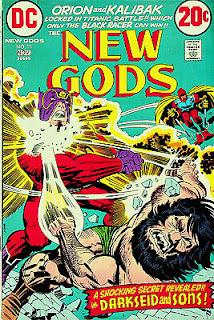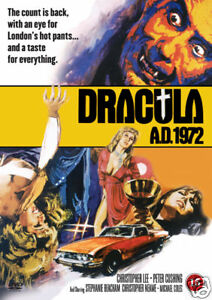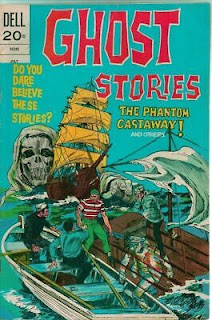The Top Movies of 1972
The Godfather (required viewing), The Poseidon Adventure (required viewing), What's Up, Doc? (see below), Deliverance (required viewing), Jeremiah Johnson (required viewing), Cabaret (very good), Deep Throat (don't bother), The Getaway, Lady Sings the Blues and Everything You Always Wanted to Know About Sex (not a Woody Allen fan).
Popular Albums of 1972
Exile on Main Street - The Rolling Stones, Honky Chateau - Elton John, The Rise and Fall of Ziggy Stardust - David Bowie, Thick as a Brick - Jethro Tull, Harvest - Neil Young, Machine Head - Deep Purple, Talking Book - Stevie Wonder, Paul Simon - Paul Simon, The Harder They Come - Jimmy Cliff, Eat a Peach - The Allman Brothers Band, Neu! - Neu!, I'm Still in Love with You - Al Green, Something/Anything? - Todd Rundgren, Back Stabbers - The O'Jays, Amazing Grace - Aretha Franklin, Sail Away - Randy Newman, Still Bill - Bill Withers, Music - Carol King, American Pie - Don McLean, America - America, First Take - Roberta Flack, Chicago V - Chicago, Super Fly - Curtis Mayfield, Catch a Bull at Four - Cat Stevens, and Seventh Sojourn - The Moody Blues.
1972 Books Later Adapted Into Movies or TV Shows
The Winds of War by Herman Wouk, Watership Down by Richard Adams, All Creatures Great and Small by James Herriott, Roadside Picnic by Arkady Strugatsky (Tarkovsky's Stalker was based on this novel), The Odessa File by Frederick Forsyth, and The Stepford Wives by Ira Levin.
Major Sporting Events of 1972**
The Dallas Cowboys won the Superbowl over the Miami Dolphins, the Summer Olympics were held in Munich (yes, those Summer Olympics. For details refer to the movie Munich), the Oakland Athletics won the World Series, the Los Angeles Lakers won the NBA Finals, Eddy Merckx won the Tour de France, Jack Nicklaus won both the U.S. Open and the Masters Tournament, and the Boston Bruins won the Stanley Cup.
Comic Books in 1972*
Adam Warlock made his first appearance in Marvel Premier #1, Luke Cage made his first appearance in Hero for Hire #1, Ghost Rider made his first appearance in Marvel Spotlight #5, DC acquired the rights to The Marvel Family, Art Spiegelman published Maus for the first time, New Gods was canceled by DC, and this set the stage for Jack Kirby's return to Marvel and the creation of The Eternals
Excellent
1. What's Up, Doc?
I could praise Ryan O'Neal, I could praise Barbara Streisand, I could praise director Peter Bogdanovich, or I could praise the writing. But you know what? The highest praise I can give this movie is that it's still funny (and still clever) 50 years later. Sure, the zany car chase near the end is a bit unnecessary, but it was 1972 and this movie presents that car chase with a knowing grin.
Modern audiences might be puzzled by the "Love means never having to say you're sorry" line at the end of the movie. This is a reference to 1970's Love Story, in which Ryan O'Neal also starred.
2. Siddhartha
Clearly a labor of love for all those involved in its production. For the more philosophical end of this story you'll want to read Hermann Hesse's book, but this film is nevertheless a beautifully photographed, well paced, and exquisitely performed work of art in its own right. It is in some ways a product of its time, but that doesn't mean its relevance has been diminished. There will always be two Indias: the one that is and the one we'd like to be, and this movie is a flawless imagining of the second one.
Fun Fact 1: The director's life paralleled Siddhartha's in many ways. He was an heir to the Avon fortune, battled substance abuse, and traveled extensively in Asia.
Fun Fact 2: This movie owes a lot to cinematographer Sven Sykvist. He worked with Ingmar Bergman on several of that director's films.
Fun Fact 3: The beautiful Simi Garewal's nude scene in this movie scandalized Indian censors. At the time even onscreen kissing wasn't permitted in Indian films.
Edgar Allan Poe by Way of Dr. No
1. Dr. Phibes Rises Again
Vincent Price reprises his role as a disfigured genius out to resurrect his dead wife. The story is relatively thin, but the budget is right there, on the screen, complete with beautiful women and memorable sets. Fans of the early Bond films - particularly of Ken Adam's set design - will find a lot to like in this movie.
And hey, it's Caroline Munro again. She's not the dead wife, but she is the face in the photograph. She played Dr. Phibes' wife in the first movie, The Abominable Dr. Phibes.
There's a torture scene in this movie that I first saw when I was very little. I didn't know until now that it was part of this movie. That once scene, short as it is, is far and away the best thing about this film. It gave me nightmares for years!
Some Good Ones
1. Fat City
Celebrated director John Huston oversaw this story of a boxer down on his luck. Stacy Keach stars, with Jeff Bridges as a young man he tries to mentor. It's a good movie, aside from the fact that Bridges' character is a bit underutilized. I especially liked the dynamic between Keach and his would-be girlfriend. That actress (Susan Tyrell) is excellent in this movie.
2. Sbatti il mostro in prima pagina (a.k.a. "Slap the Monster on Page One")
Thriller in which a girl is murdered against a background of Italy in political turmoil. It's REALLY slow, but if you have the time your patience will be rewarded. My biggest complaint about this sharply written film isn't the pacing, but rather the janitor's "shrine," discovered near the end of the movie. That detail is just a little too convenient.
ˇ3. The Hot Rock
Unfortunate title aside, it's a solid heist movie featuring Robert Redford. My patience was tested by the number of times they almost had the diamond, but the ending is satisfying and Peter Yates once again demonstrated his skill as a director. The screenwriter, William Goldman, also wrote Butch Cassidy and the Sundance Kid, The Stepford Wives, Marathon Man, All the President's Men and A Bridge Too Far. He also wrote the novel upon which The Princess Bride was based.
Quincy Jones' score might be the best part of this movie.
4. Sisters***
Brian De Palma. For whatever reason he's often left off lists of "great directors." Maybe this is because his big hits were less frequent. Maybe it's because many of his movies fall inside the same genre.
In Sisters Margot Kidder plays a mentally disturbed woman who may also be a murderess. It shows De Palma standing on the shoulders of Hitchcock, and its predictability reveals a director new to this craft. It's definitely good, but not nearly as good as other films by the same person.
5. The Canterbury Tales
The second film in Pasolini's "Trilogy of Life." It's more blatantly sexual than The Decameron and less momentous than The Arabian Nights. It's definitely not a bad movie, but I found the fixation on genitalia a bit off-putting. Yes, we know that people back then fucked like farm animals, and yes, we know that Chaucer's stories were bawdy, but I think the overemphasis on nude people takes away from the story.
Pasolini himself commented that he "wasn't in the right frame of mind" for this movie. His lover, Ninetto Davoli (who appears in the film as "Perkin") left him to marry a woman during filming, and the director's introspective mood made the subject matter more difficult to contend with.
Sex and Violence
1. Your Vice is a Locked Room and Only I Have the Key
Giallo picture in which several murders take place on an Italian estate. I can't say it's a dramatic masterpiece, but it's populated with several beautiful women and a few memorable killings to boot. To be honest I was a little disappointed by this movie. I'd been hearing about it for years, and I found it to be less than the reputation that preceded it. That oil slick near the end? Eh...
Sex and Violence, with an Extra Helping of Cheese
1. Blood Orgy (a.k.a. "The Gore Gore Girls")
An uptight, probably gay detective and a female reporter track down a killer. While they take their time doing so, said killer mutilates a series of strippers. Herschell Gordon Lewis directed this one, and if you're familiar with movies like The Wizard of Gore you'll know what you're in for. It was the director's last movie until 2002's Blood Feast 2, and it embraces a very late 60s aesthetic.
Like, Far Out Man...
1. Dracula A.D. 1972
Double points for Caroline Munro, but it's still not very good. Bringing Dracula and (in a way) Van Helsing into the "present day" was an interesting idea, but Christopher Lee has little to do in this movie, and Peter Cushing spends most of it pontificating. It brings some of the late 60s forward into the early 70s, it gives an indication of the kind of London scene guys like Bowie and Bolan were desperate to escape, but beyond that it doesn't offer much to modern viewers.
Fun Fact 1: This is the seventh film in Hammer's Dracula series, and the sixth to feature Lee.
Fun Fact 2: Peter Cushing and (to a lesser extent) Caroline Munro also appear in Dr. Phibes Rises Again (above).
Some Bad Ones
1. Buck and the Preacher
There are some good scenes in this movie, featuring some great acting, but I think it was a mistake to let Sidney Poitier direct it. The action doesn't seem to flow as it should, and between moments of violence this film just creaks along, often without any musical accompaniment. I'm also not sure how this "Delta Planter's Association" would have the money to send a posse so far from Louisiana, and what their motivations for doing so might be. I have no doubt that similar things happened in the Old West, but the tenacity of those men and the distances they travel is never really explained aside from "racism."
Fun Fact: This movie was filmed in Mexico and Kenya. Why Kenya? I have no idea.
2. Sleuth
In real life Laurence Olivier suggests stealing the jewels and Michael Caine tells him to fuck off. Then, instead of engaging in an elaborate game of dress up, Caine leaves the house, never to return. Sleuth was a adapted from a play - complete with soliloquys - and it shows. Fans of the detective genre might enjoy this movie, but as for me the only enjoyable thing about it was Ken Adam's sets.
Wikipedia states that this movie received "overwhelmingly positive reviews." It wasn't, however, doing anything for me.
3. 1776
Like Sleuth above I'm putting this in the "Bad" category more out of a dislike for the genre, not because it's objectively bad. 1776 is a musical about the founding of the United States, and as you might expect the prevalent social ills of the time aren't discussed in any meaningful way. It was 1972, 1776 is a musical, and movies like this were more about bringing people together, rather than finding fault in shared history.
There's a lengthy discussion of historical inaccuracies and critical responses here. Roger Ebert's response to this movie is, in my opinion, right on the nose.
4. Super Fly
The real star of this movie is Curtis Mayfield's soundtrack. The rest of it? Well, it isn't exactly Shakespeare. A cocaine dealer tries to make enough to stop hustlin'. The low budget is evident throughout, even if the slo-mo fight scene near the end is classic.
Fun Fact: Did I say Shakespeare? The star of this movie, Ron O'Neal, was a very well trained actor. He won several awards on Broadway prior to appearing in Super Fly, and he was cast in several Shakespeare productions after its release.
Somewhere, in the Darkest, Most Shameful Part of the Early 70s, Someone is Masturbating to this Movie
1. The Abductors
The second movie in the "Ginger trilogy," in which a lower budget, female version of James Bond exposes herself to and strings along various men in the pursuit of an ill-defined goal. I'll give it this: it was better than Girls are for Loving, the third movie in this trilogy.
I'm still wondering what that business with tying the boat to the helicopter was about. Was there a stunt removed from the film?
Porn
1. Senta: Danish Pastry
An actress visits Los Angeles and sex ensues. There's very little info available on this film, anyone appearing in it, or the production team. It's an hour long and the voiceover is unintentionally funny at times.
So Bad It's Good
1. Blacula
Why is star William Marshall so sweaty in this movie? Seriously. He sweats his way through the whole thing.
And why is it ok to dismiss the gay characters as "faggots?" I get that it was 1972, but really, they kind of undermine whatever pretensions toward equality they had. I'm not trying to be "woke" or anything, it's just that the intolerance is obvious from the beginning.
I will say that Blacula is WAY better than it's sequel, Scream Blacula Scream. The first one is missing Pam Grier, but it's also a lot less talky, and the script was more to the point. If you watch it, don't bother with questions such as "How does Blacula speak English?" or "How does Blacula know how to find places in the city?" and you'll be fine.
Related Entries:
*Some of the info in this section comes from Marvel Greatest Comics: 100 Comics that Built a Universe, which I read recently.
**Apologies if these lists are a bit America-centric. When it comes to sports more popular outside North America I'm usually at a loss.
***Wikipedia lists this movie as appearing in 1973, not 1972. I also wasn't sure about The Abductors.










































